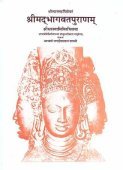Dvivida: 9 definitions
Introduction:
Dvivida means something in Hinduism, Sanskrit, Jainism, Prakrit. If you want to know the exact meaning, history, etymology or English translation of this term then check out the descriptions on this page. Add your comment or reference to a book if you want to contribute to this summary article.
In Hinduism
Purana and Itihasa (epic history)
Source: archive.org: Puranic EncyclopediaDvivida (द्विविद).—A monkey. He was a warrior in the army of Śrī Rāma.
Source: Cologne Digital Sanskrit Dictionaries: The Purana Index1a) Dvivida (द्विविद).—An Asura, and a friend of Kaṃsa; vanquished by Kṛṣṇa.*
- * Bhāgavata-purāṇa III. 3. 11; X. 2. 1; 36. 35; Brahmāṇḍa-purāṇa III. 73. 99; Vāyu-purāṇa 98. 100.
1b) A Vānara friend of Naraka; a minister of Sugrīva and brother of Mainda; wanted to avenge his friend's death; went about destroying Ānartas and cities belonging to Kṛṣṇa and met Rāma at the Raivata hill. There he offended him by grinning, breaking his wine pot and insulting his fair companions. This resulted in battle in which after a bold stand Dvivida fell dead.*
- * Bhāgavata-purāṇa X. 67. 2-26; Brahmāṇḍa-purāṇa III. 7. 242. Viṣṇu-purāṇa V. Ch. 36 (whole).
1c) Mountain a hill in Krauñcadvīpa.*
- * Brahmāṇḍa-purāṇa II. 19. 68.

The Purana (पुराण, purāṇas) refers to Sanskrit literature preserving ancient India’s vast cultural history, including historical legends, religious ceremonies, various arts and sciences. The eighteen mahapuranas total over 400,000 shlokas (metrical couplets) and date to at least several centuries BCE.
In Jainism
General definition (in Jainism)
Source: archive.org: TrisastisalakapurusacaritraDvivida (द्विविद) is the name of a Kapi or Monkey-chief, according to the Jain Ramayana and chapter 7.6 [Bringing news of Sītā] of Hemacandra’s 11th century Triṣaṣṭiśalākāpuruṣacaritra: an ancient Sanskrit epic poem narrating the history and legends of sixty-three illustrious persons in Jainism.—Accordingly, as Hanumat said to Rāma: “There are many Kapis like me. King Sugrīva says this from affection. [e.g., Dvivida, ...], and many other Kapi-chiefs are here, master. Completing their number, I am ready to do your work. Shall I lift up Laṅkā with Rākṣasadvīpa and bring it here? Or shall I capture Daśakandhara and his relatives and bring them here? [...]”.

Jainism is an Indian religion of Dharma whose doctrine revolves around harmlessness (ahimsa) towards every living being. The two major branches (Digambara and Svetambara) of Jainism stimulate self-control (or, shramana, ‘self-reliance’) and spiritual development through a path of peace for the soul to progess to the ultimate goal.
Languages of India and abroad
Sanskrit dictionary
Source: Cologne Digital Sanskrit Dictionaries: Shabda-Sagara Sanskrit-English DictionaryDvivida (द्विविद).—m.
(-daḥ) The name of monkey, slain by Rama or Vishnu in that incarnation.
Source: Cologne Digital Sanskrit Dictionaries: Monier-Williams Sanskrit-English DictionaryDvivida (द्विविद):—[=dvi-vida] [from dvi] m. Name of a monkey (slain by Viṣṇu, or an ally of Rāma and son of the Aśvins), [Mahābhārata; Harivaṃśa; Purāṇa]
Source: Cologne Digital Sanskrit Dictionaries: Yates Sanskrit-English DictionaryDvivida (द्विविद):—[dvi-vida] (daḥ) 1. m. Name of a monkey slain by Rāma.
Source: DDSA: Paia-sadda-mahannavo; a comprehensive Prakrit Hindi dictionary (S)Dvivida (द्विविद) in the Sanskrit language is related to the Prakrit word: Divia.
[Sanskrit to German]
Sanskrit, also spelled संस्कृतम् (saṃskṛtam), is an ancient language of India commonly seen as the grandmother of the Indo-European language family (even English!). Closely allied with Prakrit and Pali, Sanskrit is more exhaustive in both grammar and terms and has the most extensive collection of literature in the world, greatly surpassing its sister-languages Greek and Latin.
See also (Relevant definitions)
Partial matches: Dvi, Vida, Vita.
Starts with: Dvividari.
Query error!
Full-text: Dvividari, Mainda, Divia, Raivataka, Kapi, Narakasura, Sugriva, Vanara, Anarta, Naraka, Vishnu.
Relevant text
Search found 24 books and stories containing Dvivida, Dvi-vida; (plurals include: Dvividas, vidas). You can also click to the full overview containing English textual excerpts. Below are direct links for the most relevant articles:
Garga Samhita (English) (by Danavir Goswami)
Verse 1.6.27 < [Chapter 6 - Description of Kaṃsa’s Strength]
Verse 1.6.28 < [Chapter 6 - Description of Kaṃsa’s Strength]
Verse 8.12.7 < [Chapter 12 - The Prayer and Armor of Lord Balarāma]
Vishnu Purana (Taylor) (by McComas Taylor)
Chapter 36 - Balarāma defeats the giant monkey Dvivida < [Book Five: Kṛṣṇa]
The Death of Dvivida < [Fifth Section]
Bhagavata Purana (by G. V. Tagare)
Chapter 67 - Balarāma slays Dvivida < [Book 10 - Tenth Skandha]
Chapter 3 - Glorious deeds of Kṛṣṇa < [Book 3 - Third Skandha]
Chapter 2 - The Lord’s descent in Devakī’s womb < [Book 10 - Tenth Skandha]
Vishnu Purana (by Horace Hayman Wilson)
Chaitanya Bhagavata (by Bhumipati Dāsa)
Verse 2.15.49 < [Chapter 15 - Descriptions of Mādhavānanda’s Realization]
Verse 1.9.52 < [Chapter 9 - Nityānanda’s Childhood Pastimes and Travels to Holy Places]
Related products
